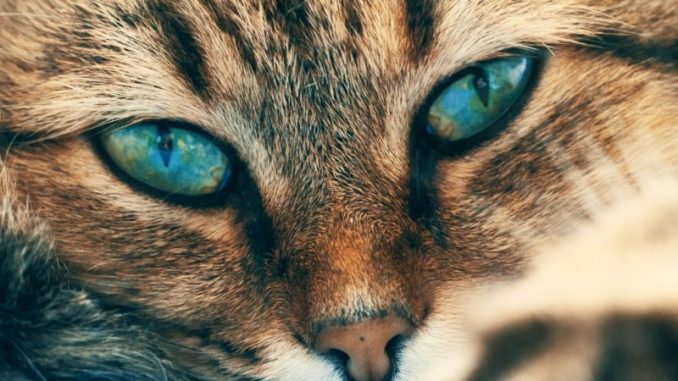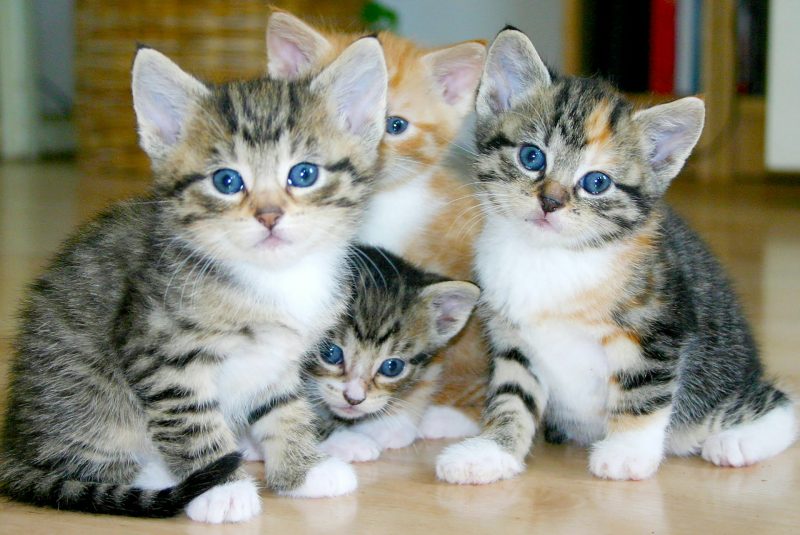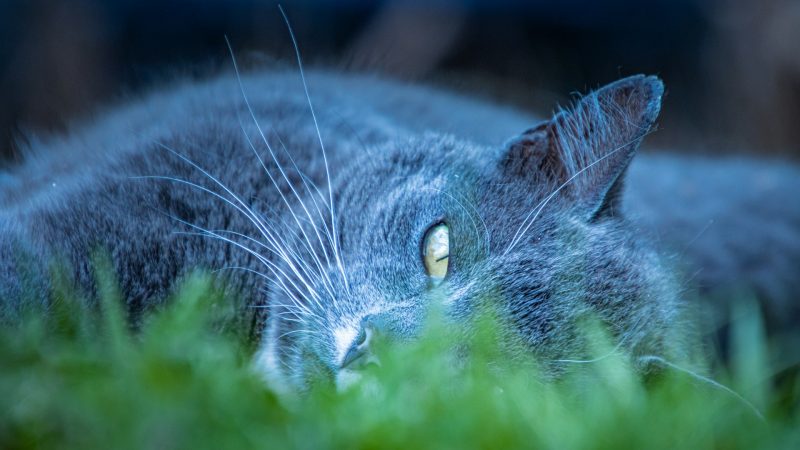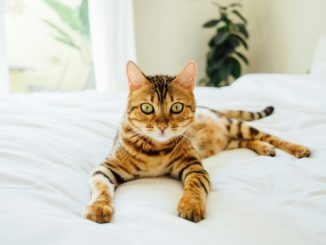
Do your cats eyes look weird? Cats have always fascinated us with their mysterious and expressive eyes. Unlike human eyes, cat eyes possess unique structures that make them stand out in the animal kingdom. These adaptations not only enhance their vision but also contribute to their sometimes ‘weird’ appearance.

Anatomy of Cat Eyes
The primary reason behind the peculiar look of cat eyes is the presence of the tapetum lucidum. This reflective layer sits behind the retina and bounces light back through it, giving cats superior night vision. The tapetum lucidum is what makes a cat’s eyes glow eerily in the dark
Cats Eyes Look Weird in the Dark: The Role of Tapetum Lucidum
Cats have a fascinating eye structure known as the tapetum lucidum. This reflective layer is located behind the retina and acts like a mirror, bouncing light back through the retina. This unique adaptation enhances their ability to see in low-light conditions, making them exceptional nocturnal hunters. It’s this feature that gives cats’ eyes their eerie glow in the dark.
Vertically Slit Pupils
Another distinct feature is their vertically slit pupils. These pupils can expand significantly in low light, allowing more light to enter the eye. This adaptation helps cats see better in dim environments, making them excellent nocturnal hunters
Evolutionary Adaptations
Throughout evolution, these eye features have been fine-tuned to aid in night-time hunting. The combination of the tapetum lucidum and slit pupils gives cats an edge in the dark. These traits allow them to detect even the slightest movement, crucial for their survival and hunting efficiency
Variations in Eye Color and Shape
Cats can have a variety of eye colors, ranging from blue to green, yellow, and orange. Eye shapes also vary, with some breeds displaying rounder eyes while others have more almond-shaped ones. These variations add to the unique and sometimes ‘weird’ look of cat eyes
Cultural Perceptions and Superstitions
Across different cultures, cat eyes are often linked to mysticism and supernatural beliefs. Their striking appearance has inspired numerous superstitions and folklore. This cultural backdrop can influence why people find cat eyes unusual or eerie
Why Do My Cats Eyes Look Weird

Unique Eye Structures
Cats have eye structures that are quite different from humans. One standout feature is their tapetum lucidum, a reflective layer behind the retina that makes their eyes appear to glow in the dark. This adaptation enhances their night vision and often seems eerie or peculiar to us.
Glowing in the Dark
The glow you see in your cat’s eyes at night isn’t just for show. It’s this reflective layer, the tapetum lucidum, bouncing light back through the retina. This allows cats to make the most out of any light available, aiding their nocturnal hunting skills.
Why It Looks Weird
These structural differences give cat eyes their distinctive look. The glowing effect combined with the slit pupils contributes to what many describe as “weird” or unusual. But remember, these features are essential for their survival as nocturnal predators.
Understanding these unique adaptations can help demystify why your cat’s eyes may look so different and even a bit strange.

Evolutionary Adaptations
Optimal Night Vision and Hunting
Cats are natural-born hunters, and their eyes have evolved to support this role. One of the key features that aid them in hunting at night is the tapetum lucidum. This reflective layer behind the retina bounces light back through the eye, enhancing their night vision. It’s what makes a cat’s eyes seem to glow in the dark—a phenomenon both fascinating and eerie.
The Role of Slit Pupils
Another critical adaptation is their vertically slit pupils. These pupils can open wide in low light conditions, allowing more light to enter the eye. This ability is essential for nocturnal hunting as it maximizes their visual capabilities in dim environments. In bright light, these pupils narrow to a thin slit, reducing the amount of light that enters and protecting their sensitive eyes.
Nocturnal Predators
These unique features—tapetum lucidum and slit pupils—give cats a significant advantage as nocturnal predators. They can detect even the slightest movements in near-total darkness, making them formidable hunters. Their eyes are a perfect example of nature’s way of equipping them with the tools needed for survival in the wild.
Variations in Eye Color and Shape
Eye Color Diversity
Cat eye colors are as diverse as the feline world itself. From mesmerizing blues to vivid greens, striking yellows, and deep oranges, the range is vast and fascinating. This variety is due to genetics and the amount of melanin present in the iris. For example, Siamese cats often have piercing blue eyes, while many domestic shorthairs might sport a captivating green.
Shape Matters
Just like color, the shape of a cat’s eyes can differ significantly between breeds. While some cats have rounder eyes giving them an expressive appearance, others may have more almond-shaped eyes that add a touch of mystery. These different shapes not only contribute to the unique aesthetics of each breed but also affect how light enters the eye, impacting vision slightly.
Breed-Specific Traits
Certain breeds are known for their distinctive eye shapes. Persian cats, for instance, typically have large, round eyes that enhance their sweet, doll-like faces. On the other hand, the sleek and elegant Siamese cats usually boast almond-shaped eyes that complement their slender bodies.
The ‘Weird’ Factor
The combination of these varying colors and shapes adds to why cat eyes can appear ‘weird’ or unusual to us. The interplay of light on different eye colors and shapes can create effects that seem almost otherworldly. When you catch a glimpse of your cat’s glowing eyes in the dark, remember it’s all these elements working together to create that magical and sometimes eerie sight. “`
Cultural Perceptions and Superstitions
Cat Eyes in Mysticism
In various cultures, cat eyes are often linked with mystical and supernatural elements. Their unique glow-in-the-dark feature has been seen as a sign of otherworldly powers. The ancient Egyptians revered cats and believed that their reflective eyes were a window to the gods. Similarly, in Japanese folklore, the bakeneko, or “monster cat,” was said to possess magical abilities, including shape-shifting and controlling the dead.
Superstitions and Beliefs
Cat eye shapes and colors have inspired numerous superstitions over the centuries. In Western cultures, black cats with glowing eyes are often considered omens of bad luck, especially when crossing one’s path. Conversely, in some Asian cultures, a cat’s eyes are seen as good luck charms. The color of a cat’s eyes can also hold significance. For instance, blue-eyed cats in Celtic folklore are often associated with fairies and magical realms.
Eye Color and Shape Impact
The interplay of light on different eye colors and shapes can result in an eerie or mesmerizing appearance. Cats with heterochromia, where each eye is a different color, are particularly fascinating and sometimes feared. Almond-shaped eyes, common in breeds like Siamese cats, are often considered more enchanting than round eyes found in Persians. These physical traits contribute to the mystique and varied cultural perceptions of cats.
Modern-Day Interpretations
Today, while many old superstitions linger, modern views of cat eyes are generally more appreciative of their uniqueness. They inspire awe rather than fear, and their mysterious qualities continue to captivate. Cat lovers around the world often celebrate the diverse beauty of feline eyes, sharing images and stories that highlight the distinctiveness of each cat’s gaze.
Cultural Significance Across the Globe
In various cultures, cat eyes have been symbols of protection, mystery, and even divination. Ancient Egyptians revered cats and their eyes, believing they held magical properties. In Japan, the Maneki-neko, or “beckoning cat,” is often depicted with one paw raised and wide, inviting eyes, symbolizing good fortune and prosperity.
Conclusion: Why Do My Cats Eyes Look Weird
In conclusion, the unique appearance of a cat’s eyes is a result of a combination of factors, including their vertical pupils, tapetum lucidum, and overall eye structure. These features give cats excellent night vision and the ability to detect movement in low light conditions.
While some may find their eyes strange or eerie, it’s important to appreciate the evolutionary adaptations that make cats successful hunters and predators. So the next time you see a cat with their unique eyes, take a moment to admire the fascinating biology behind them.
FAQs
What makes cat eyes so unique?
Cat eyes are unique due to their vertical slit-shaped pupils, which allow them to control the amount of light entering their eyes more effectively than round pupils. This adaptation helps cats to see well in both bright and dim light conditions.
Why do cats have vertical slit-shaped pupils?
The vertical slit-shaped pupils of cats are thought to be an evolutionary adaptation that helps them to accurately judge distances and track prey. This shape also allows them to have a wider range of vision compared to animals with round pupils.
What gives cat eyes their reflective appearance?
The reflective appearance of cat eyes, known as eyeshine, is caused by a layer of cells called the tapetum lucidum located behind the retina. This layer reflects light that passes through the retina, giving cats better vision in low light conditions.
Can all cats see in the dark?
While cats have excellent night vision due to their unique eye structure, not all cats can see in complete darkness. Their ability to see in low light conditions is due to the presence of the tapetum lucidum, which reflects light and enhances their vision in dim light.
Do all cat breeds have the same eye characteristics?
No, different cat breeds can have variations in eye color, shape, and size. Some breeds may have round pupils instead of vertical slits, and their eye colors can range from blue, green, yellow, and brown. These variations are a result of genetic diversity among different cat breeds.





Thanks. Great info for cat owners and cat lovers!